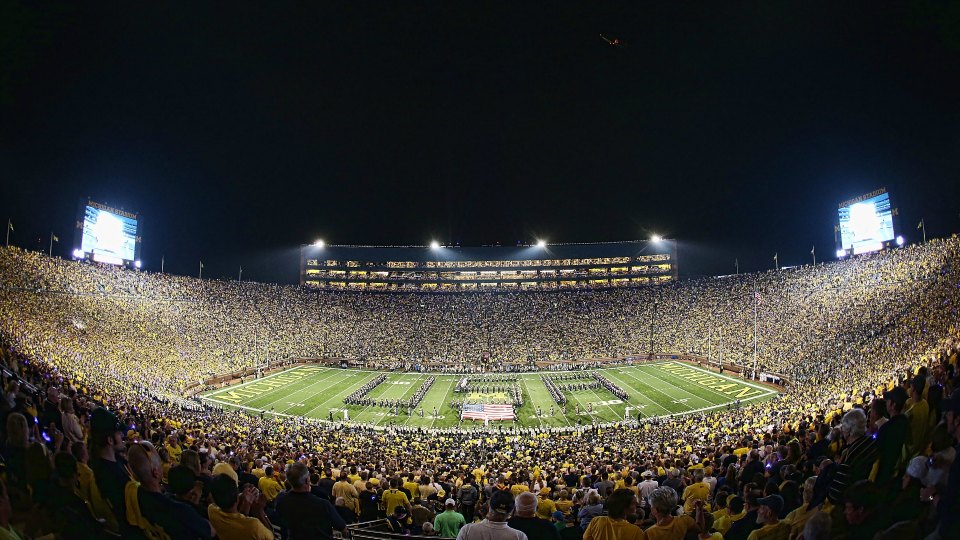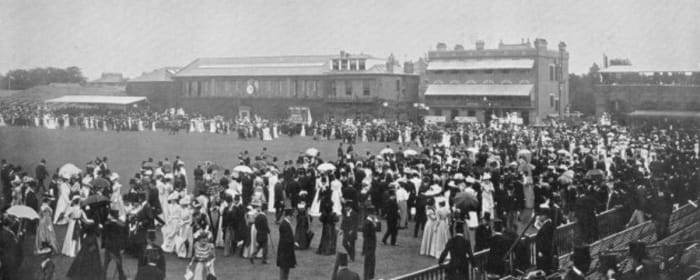Embracing the horseshoe: A look through centuries of stadium design
Blame the Greeks for the horseshoe-styled stadium and the Romans for all those high-rising cheap seats. But, hey, at least those two cultures gave us early stadium designs, something we lacked for centuries upon centuries until the 1800s rolled around.
The Ancient Days
The earliest known stadiums—the term itself comes from a Greek word for a unit of measurement—came from Greece, where stands surrounded U-shaped tracks. Some of those stands were built into hillsides, while others used all sorts of stone—even marble—to give spectators a stair-stepped view of watch foot races.
While the Greeks gave us stadiums in the half-dozen or so centuries before Christ, credit the Romans for really giving stadiums a monumental shift in the first few centuries after.
The Colosseum, built in 80 AD, still serves as the father of all modern stadiums. Tim Cahill, architect of the NFL’s newest venue, Levi’s Stadium in Santa Clara, California, tells SI.com his design was modeled after a “Roman amphitheater.”
In Rome, the Colosseum certainly holds all sorts of potential for political and cultural studies, but from a pure stadium design, the 157-foot-tall 50,000-seat venue could certainly pass a design board today. The 80 entrances—76 of them were numbered and four were considered grand entrances—led to tiered seating based squarely on social hierarchy, with the seats farthest from the action left for those of less social standing.
The ellipse-shaped venue allowed the three tiers of travertine (a limestone), concrete, stone, tiles and other materials to surround the field of sport, which was sadly used far too often for something quite unsporting, in a design that packed in the number of spectators.
With hundreds of these amphitheaters built across the Roman Empire over centuries, another style of venue started to take shape: the circus.
While the amphitheater was designed for maximum seating fully enclosing a gladiator field, the circus style of stadium, a take on the Greek’s horseshoe, built stands based on exact measurements of a track and left one end open. The Romans upped the ante beyond foot racing, giving circus-style stadiums a distinct chariot-racing focus.
The largest circus stadium, Rome’s Circus Maximus, welcomed up to 250,000 folks into the three-story stone structure.
The Void
With amphitheaters and circus-style stadiums dominating the Roman culture for up to six centuries, the Middle Ages throughout Europe brought a dearth of new stadium design. Jousting—a popular sport for centuries—offered us a smattering of bleacher-style seating in open fields or castle courtyards. For over 1,000 years, though, the building of stadiums lacked intrigue.
But the Colosseum’s place in history would make a return, as amphitheaters and jousting fields combined to start creating a modern style of stadiums by the 19th Century.
The New Era
Stadium construction moved from Italy and Greece to England, where Lord’s Cricket Ground in London started taking shape in 1787. By 1812, Lord’s had found a new location and started creating what is now likely the oldest in-use stadium in the world, with its first structure built in 1814. A grandstand 30 feet high and 175 feet long took shape in 1867, complete with a private box for the Prince of Wales.
In Australia, stands for cricket followed suit, with the Melbourne Cricket Ground’s bleacher-style venue first opening in 1854.
The late 1800s saw a rise in wooden-stand stadium construction. From the start of the All England Croquet Club—now the home of Wimbledon—in 1868 to a smattering of baseball parks in the U.S., steel and concrete started to help give form to grandstands.
The popularity of sports at the time gave fans plenty of baseball stadiums holding well over 10,000 spectators, and the first football stadium came to life in Philadelphia, when the University of Pennsylvania opened Franklin Field, the oldest stadium still operating for football games. When it opened in 1895 for the Penn Relays, it offered the first scoreboard in the U.S. In the 1920s, Franklin Field enjoyed a major expansion, going to two tiers and ballooning to a capacity of over 78,000, the largest in the nation at the time.
In England, where soccer was on a major rise, the first soccer-specific venue came in 1892 when Everton F.C. opened Goodison Park in Liverpool. Eventual expansions made Goodison Park the first English soccer stadium to have a four-sided stadium with two-tier stands and the first club to have a stadium with a three-tier stand.
While the late 1800s saw a rise in baseball parks in the U.S. and soccer stands in Europe, stadiums grew more varied in the early 1900s.
Construction Aplenty
In England, Scottish architect Archibald Leitch created multiple soccer venues in England, including Old Trafford in Manchester in 1910 holding over 100,000 spectators and serving as the first soccer stadium with continuous seating in the corners of the venue.
Two years before, White City Stadium served as the 1908 Summer Olympics venue showing off how seating—and not just standing terraces—could fill a stadium with continuous tiers around the perimeter of a track.
Back in the U.S., football started giving shape to concrete stadiums. In 1903, Harvard Stadium opened, now the nation’s oldest permanent concrete structure for college sports.
And then in 1923, old Yankee Stadium gave the nation—and likely the world—the first three-tiered stadium under the design of Osborn Engineering Company.
With Leitch designing soccer stadium upon soccer stadium in England and plenty of colleges across the the U.S. embracing concrete bowls for football, the first 20 to 40 years of the 1900s saw a massive rise in stadium construction.
Along with old Wembley Stadium in 1923, a towering structure in London, the introduction of the Yale Bowl in 1914, the West Coast started getting into the mix with L.A.’s Coliseum opening in 1923 and the Rose Bowl in 1922, both showing off the power of a Roman-styled bowl stadium built of concrete.
Those Don’t Look Good
The first 50 years of the 20th Century saw a combination of materials start to take shape in stadium construction, including wood, concrete and steel. But as the sizes of stadiums continued to grow, so did their use, leading us into an age in the U.S. by the ‘50s and ‘60s where large concrete structures were built plain and abstract enough to welcome basically any event, no matter the use.
One of the lone still-standing examples, O.co Coliseum in Oakland, opened in 1966 and is the last remaining venue hosting both a NFL and MLB team. This line of thinking also created the domed stadium, first seen in 1965 when the nearly 68,000-seat Astrodome became the first in line. Along with a completely enclosed stadium, the need for artificial turf was born. Not to stop at domes and turf, the Astrodome also stepped up the use of luxury boxes, a trend that has since ballooned and now often leads the design discussion.
The Backlash
By the 1970s, though, Kansas City was ready to quash this generic trend, opening both Arrowhead Stadium and Kauffman Stadium with sport-specific designs next door to each other.
While some teams jumped on the sport-specific design—Dodger Stadium in 1962 showed off engineering that reduced poles blocking views—other cities embraced the dome idea, but with a twist. The first successful retractable roof took shape in Toronto’s SkyDome, opening in 1989.
By the time Oriole Park at Camden Yards opened in Baltimore in 1992, the sport-specific stadium design was back in vogue, stretching across baseball, football, soccer and even the Olympics.
In 2014, two sports—namely college football in the U.S. and soccer in Europe—continued a push to enlarge stadiums. Michigan Stadium seats 109,900, the largest non-racing venue in the U.S., while Barcelona’s Camp Nou holds nearly 100,000. But for other sports, the ones that don’t pack in over 100,000 spectators, creating an intimate space has become the leading concern. Of course, there’s also distinct delineation between luxury suites and the rest of us riffraff.
For that, blame the Romans.
Tim Newcomb covers stadiums, design and gear for Sports Illustrated. Follow him on Twitter at @tdnewcomb.








